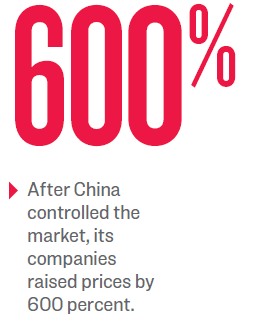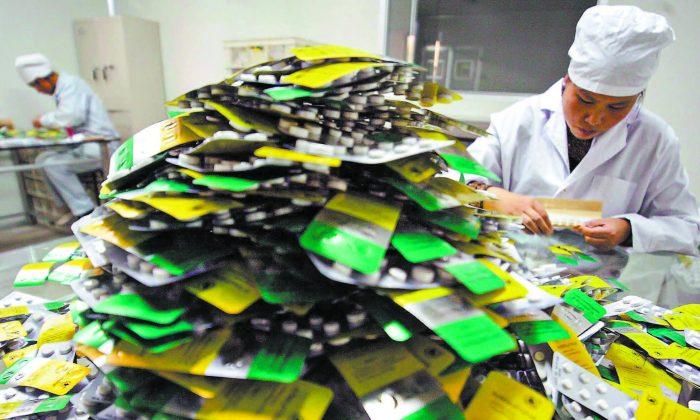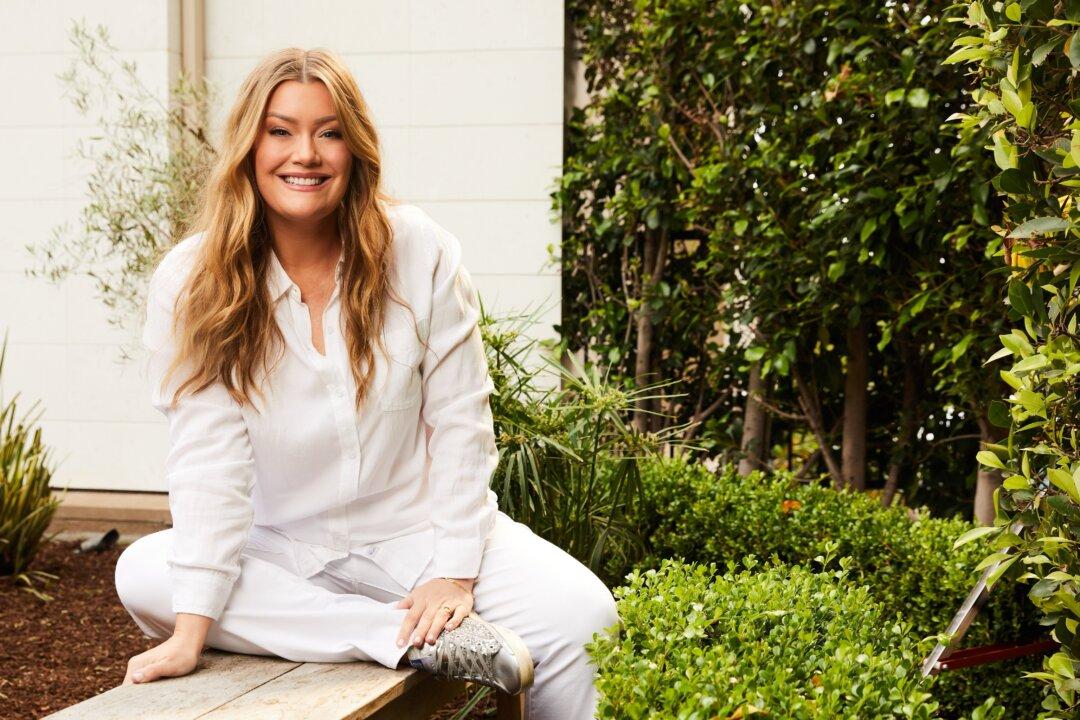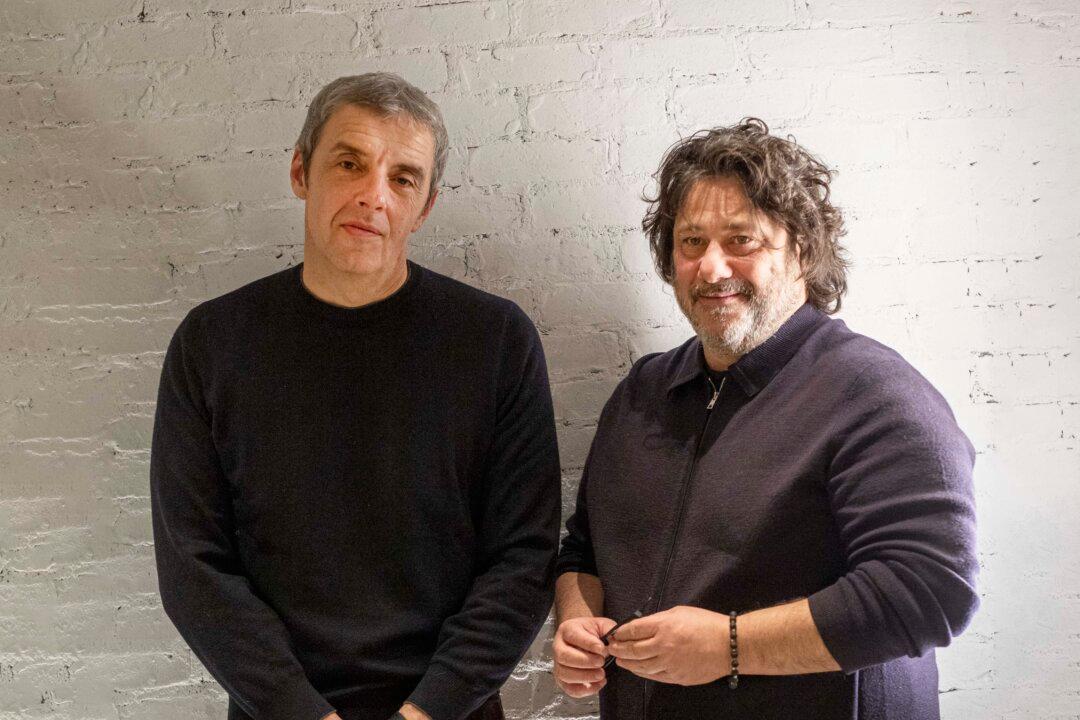As Chinese companies have begun taking control of the pharmaceutical market in the United States, a hidden health crisis has been building.
The Food and Drug Administration (FDA) is inspecting only a small number of the Chinese companies that manufacture U.S. drugs, and those it does inspect are often found to have serious health violations. Meanwhile, the drugs that are making their way into the United States from China, either as finished products or as ingredients, are often falling far below U.S. safety standards. And some of these drugs are not being inspected at all.
The failure of Chinese drugs to meet U.S. quality standards is exacerbated by the volume of imported drugs. China has become the primary source of many crucial medical drugs, including penicillin, heparin, and medications essential for surgeries.
This supply would be placed in jeopardy if a dispute were to erupt between China and the United States. If the supply chains are cut, crucial medications would stop reaching Americans.
A new book, “China RX: Exposing the Risks of America’s Dependence on China for Medicine” by Rosemary Gibson and Janardan Prasad Singh, explains what led to the U.S. dependence of Chinese drugmakers. It details how the Chinese regime has overtaken, and in some cases, put out of business, many key drug industries by undercutting competitors, stealing from competitors, and cutting corners.
If China cut its supplies now, Gibson and Singh write, “Surgeries would be canceled, cancer treatments halted, kidney dialysis rationed. Infections would spread.” Global reliance on China for drug manufacturing is already becoming a reality.
It’s unclear just how many drugs in the United States come from China, since many drug companies choose to keep their sourcing under wraps or fail to take due diligence in identifying the sources of their ingredients. A short list of medications made in China and sold in the United States that the authors traced includes medications to treat HIV, Alzheimer’s disease, bipolar disorder, schizophrenia, cancer, depression, epilepsy, and high blood pressure, among others.
Even drugs not directly sourced from China often have Chinese chemicals as their ingredients. The authors state, “China is the largest global supplier of the active ingredients and chemical building blocks needed to make many prescription drugs, over-the-counter products, and vitamins.”
Going Global
It wasn’t always this way. Gibson and Singh write, “In the 1990s, the United States, Europe, and Japan manufactured 90 percent of the global supply of the key ingredients for the world’s medicines and vitamins.” Now, according to industry newsletters cited in the book, 80 percent of active ingredients in medicines come from China and India.While India also makes generic drugs for the United States, the authors note, “it, too, is dependent on China for key ingredients to make drugs such as penicillin.”
The impetus for this shift in the global supply chain can be traced back to 2000, when then-President Bill Clinton was in the final year of his second term. The authors write that “the White House went into overdrive to pass legislation to give China permanent normal trade relations,” granting the same trade advantages to China as other U.S. trading partners, including low import tariffs. This was done against public opinion, which overwhelmingly opposed the free trade deal.
As the doors opened, China had its own plans to dominate the markets. The authors note, “China pressured U.S. companies to lobby on its behalf or face economic retribution. It reportedly kept close tabs on chief executives who lobbied Capitol Hill. Companies that rebuffed the Chinese government’s expectations risked being barred from investing, manufacturing, and selling their products in the country.”
Just three years after Clinton’s U.S.–China Relations Act of 2000 was signed into law, the United States incurred a trade deficit with China totaling $124 billion.
Lack of Inspections
For drug industries—and for the health of average Americans, China’s command over drug manufacturing would have a lasting impact.The FDA was ill-prepared for that new reality. Gibson and Singh note, “The FDA was created in 1906 with the belief that America’s medicines would be made in the United States.” The FDA was not set up to inspect foreign facilities on a large scale—and Chinese drug plants went out of their way to make inspections exceedingly difficult.
“Drug company executives at home complained to the FDA about the uneven playing field. It was unfair that they were constantly inspected while businesses shifting production abroad to China were hardly ever inspected,” the authors write. These warnings, however, went largely unheard.
 After Clinton eased trade restrictions, at least 714 Chinese plants began making drugs and active ingredients for the United States, with the FDA only inspecting around 15 of them a year, according to the book.
After Clinton eased trade restrictions, at least 714 Chinese plants began making drugs and active ingredients for the United States, with the FDA only inspecting around 15 of them a year, according to the book. The situation only grew worse: In 2007, the FDA budget for inspection programs was cut, including the budget to inspect foreign plants making drugs for the United States. The authors write, “As the regulatory apparatus was being decimated, toxic products made in China flowed into the United States.”
The FDA was able to expand its inspections of Chinese plants in 2008, when it opened its first office in China, which was also the first FDA facility outside the United States. The reforms had mixed results. The book states that soon after, when FDA inspectors attempted to inspect Shanghai No. 1 Biochemical & Pharmaceutical Co., which sells the blood thinner heparin to the United States, they found that “the facility apparently never made any heparin and was a so-called ‘show’ factory.”
The company had been purchasing its heparin from an unknown factory and was merely putting its name on the aluminum drums that were shipped to the United States.
The FDA improved its situation in China somewhat, but remains under-staffed. As of April 2014, only two full-time FDA staff members were assigned to the agency’s China office in Beijing for inspecting drug-manufacturing plants. The Chinese regime also refused to grant visas to additional inspectors the agency had hired and forced the FDA to close its offices in Guangzhou and Shanghai.
Inspections also don’t guarantee safety. The FDA is required to give local government authorities advance notice when inspecting facilities. Additionally, FDA inspectors often have trouble communicating during sensitive negotiations, and long delays are common.
The book quotes an industry veteran who said data requests that would take 10 to 15 minutes in the United States will often take days in China. Furthermore, “you know they are scrubbing the data. They’re showing you what they want to show you, in many cases,” the industry expert said.
A High Cost
The poor quality of made-in-China medicine has already taken its toll. In March 2008, the FDA held a press conference in response to news that heparin made in China and sold through Illinois-based Baxter Healthcare Corp. was contaminated. The tainted heparin killed four people and injured 350. The full toll around the world was never reported, although federal officials determined that the contaminated product had been shipped to 11 countries.When FDA inspectors traveled to the plant in Changzhou, China, that made the contaminated heparin, they discovered the heparin ingredient—made from pig intestines—was made in a dirty tank. Later, scientists conducted tests and identified the contaminant as oversulfated chondroitin sulfate.
In 2007, a similar contamination scandal occurred with Chinese-made pet food laced with melamine. Thousands of pet dogs and cats got sick, and hundreds died. A year later, the same toxic chemical was found in Chinese-made baby formula, which killed at least six babies and caused illnesses in more than 300,000 infants in China.
Among the problems with Chinese companies is that they often sell drugs at lower prices and drive out foreign competitors who do make medicines according to regulated standards.
“Noncompliance with U.S. standards is a deliberate competitive strategy. As long as they aren’t caught, they continue to win contracts. Lower prices discourage production in the United States and force worldwide sourcing, thereby risking poorer quality products,” Gibson and Singh write.
This was seen clearly in the vitamin C market. In the early 1990s, most vitamin C (ascorbic acid) was made in Europe or Japan. China entered the market in the mid-1990s. By 2001, four major Chinese companies had cut their vitamin C prices in half. Other companies couldn’t compete.
After China controlled the market, its companies raised prices by 600 percent, according to the authors. A 2005 class-action lawsuit filed in New York found an “overwhelming evidence of collusion” among the Chinese companies.
The book states, “The companies admitted to price-fixing and acting under the direction of the Chinese government.” The Chinese regime used similar tactics to control the penicillin market.
The methods the Chinese Communist Party has used to seize control of global drug markets follows a similar model it has employed to control other sectors. The authors cite testimony from Jeffrey Johnson, president of cybersecurity firm SquirrelWerkz, before the U.S.–China Economic and Security Review Commission created by Congress.
Johnson said that “these campaigns consist of state-sponsored and supported criminal cartels” that have used a variety of dishonest tactics designed to “accelerate China’s entry and domination of each key global industry.”
Former FDA commissioner Dr. Margaret Hamburg explained, in a 2014 speech in Beijing, the consequences of relying on China to produce vital life-saving drugs. “The risks are greater at every step in our increasingly complex global supply chain networks today. Sometimes these hazards are the result of a lack of quality control ... [or] intentional acts of diversion, counterfeiting, or adulteration.”





